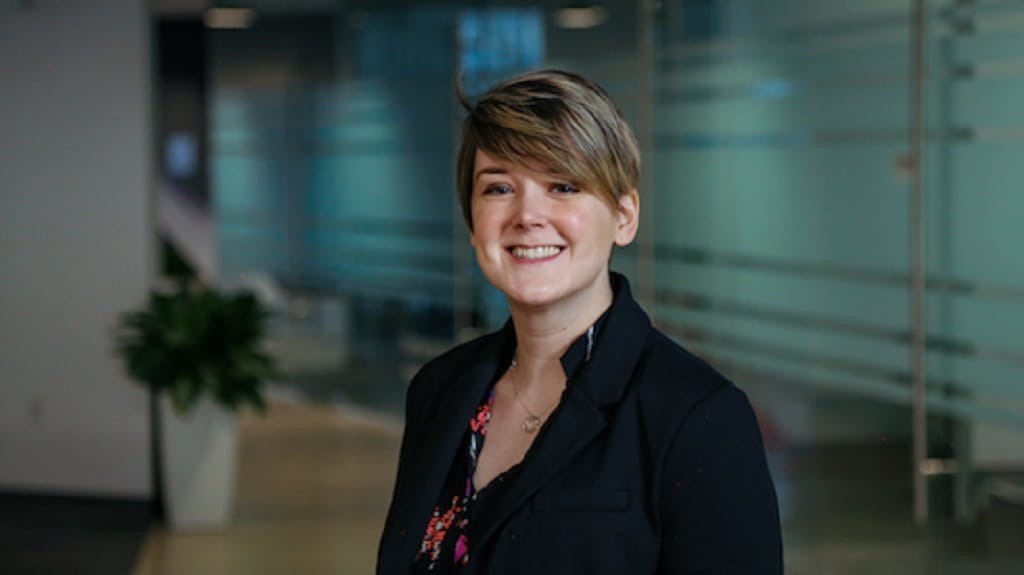Catherine McNally: The Digital Divide is an Equality Issue
To work toward equal access, more affordable options must be created, including community-based solutions.
Broadband Breakfast

Per the latest U.S. Census numbers, about one in four American households is stuck without internet. And a quarter million people with home internet still listen to the dial up screech when they hop online.
The majority of folks lacking home internet live in states with large rural populations and high rural poverty rates, like Mississippi, Arkansas and Alabama.
In Mississippi, as an example, 60% of homes don’t have broadband, satellite or dial up. And 53% of the state’s population is considered rural with a rural poverty rate of 23%.
Limited options and slow speeds top the list of reasons why rural states are home to high numbers of disconnected households. But steep costs are the most imminent barrier to home internet in rural areas.
According to a 2020 report on worldwide internet pricing by Cable.co.uk, the U.S. is the most expensive country for internet out of all developed Western nations. Here, internet costs an average of $60 a month. Internet in the cheapest country, Ukraine, costs an average of $6.40 a month.
Digital divide deep dive: Issaquena County, Mississippi
Issaquena County is Mississippi’s least-connected county with only 20% of homes paying for an internet connection. The median income there is $14,154 per individual in 2019, compared to a $31,133 national median income. The overall poverty rate in the county is 29%, which is about 16% higher than the U.S. as a whole.
That is a glaring contrast to the most-connected county in the most-connected state: Morgan County, Utah. Morgan County is home to 95% of households with an internet connection, the median individual income there was $37,091 in 2019 and the overall poverty rate is 3%.
Residents of Issaquena County are lucky if they can get download speeds of 25 Mbps, which is the Federal Communication Commission’s current definition of “high speed internet.” The slowest speeds available, 5–12 Mbps, are barely enough to stream in HD, let alone connect to a Zoom call.
If we narrow down our view to Valley Park, a town of just over 100 people in Issaquena County, we see that some residents have the option of a single AT&T DSL internet plan.
The AT&T plan costs $660 a year for speeds of 25 Mbps, which barely keep up with critical modern-day online tools like online learning and telehealth.
Our case study of Issaquena County and Valley Park, Mississippi, highlights further opportunities tied to home connectivity and equality:
- Access to online learning. About 23.7% of Issaquena County residents have obtained a high school degree, while 3.2% have no schooling. Online education allows individuals to expand their knowledge and further their careers.
- Greater access to livable wages.5% of residents earn a household income of $10k or less. This is further divided by race: In 2019, Black and African American residents earned a median household income of $21,146, while white residents earned a median household income of $52,188.
- More employment opportunities. The employment rate in Issaquena County has steadily declined since 1990. Now, 10.6% of residents are considered unemployed.
- Better access to health care. The U.S. Health Resources and Services Administration found that half of Mississippi’s residents live in counties with more than 2,000 patients per primary care physician. Issaquena County has been designated a Medically Underserved Area since 1978, meaning the county has a shortage of primary care, dental and/or mental health providers. Better access to telehealth also enables residents who cannot make the drive to the nearest hospital or clinic.
Solving the digital divide
To work toward equal access, more affordable options must be created. The Emergency Broadband Benefit fund is one option, but it remains largely untapped by American households. Subsidies like Lifeline may also lower barriers to internet access, but participation remains low.
Community-focused solutions are likely a better answer, such as Land O’Lakes’s American Connection Project. The project opened more than 2,800 free public Wi-Fi locations in spots like the Tractor Supply Store in Spooner, Wisconsin, in order to keep farming communities connected.
Also significant is this year’s infrastructure bill, which calls on states to determine localized needs and strategies for improving affordability and access to the internet.
State sponsored projects may also solve the severe lack of competition between U.S. broadband services. This should reduce costs last-mile providers incur to connect to middle-mile networks, which could, and should, pass savings down to households. Case in point: California recently introduced an open access middle-mile project with the goal of providing nondiscriminatory access. The bill passed unanimously.
A modernized definition of what qualifies as “high speed internet” would also benefit rural households. Currently, the standard of 25 Mbps download speeds and 3 Mbps upload speeds shorts rural users of opportunities tied to telehealth, online learning and remote work.
This outdated definition allows service providers to complete minimum-viable network expansions and mark areas as “connected.” It also de-incentivizes providers to improve existing-but-subpar networks, such as the 10 Mbps DSL line I found offered in nearby Morton, Mississippi.
One thing is clear: The way the U.S. has approached internet access in the past does not work. New strategies and policies are required to repair the digital divide. Internet access is a right, not a privilege in today’s world.
Catherine McNally is an Editorial Lead for Reviews.org, where she reviews internet service providers across the US. She has a passion for using data to highlight the need for better internet access across the US and believes that internet is a critical lifeline in today’s world. She has also published speed test and pricing reports to help everyday consumers make informed decisions. This piece is exclusive to Broadband Breakfast.
Broadband Breakfast accepts commentary from informed observers of the broadband scene. Please send pieces to commentary@breakfast.media. The views expressed in Expert Opinion pieces do not necessarily reflect the views of Broadband Breakfast and Breakfast Media LLC.








